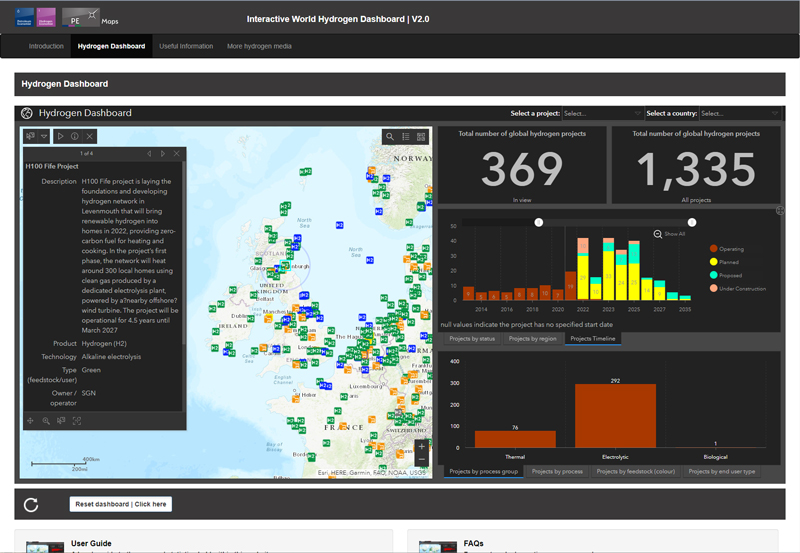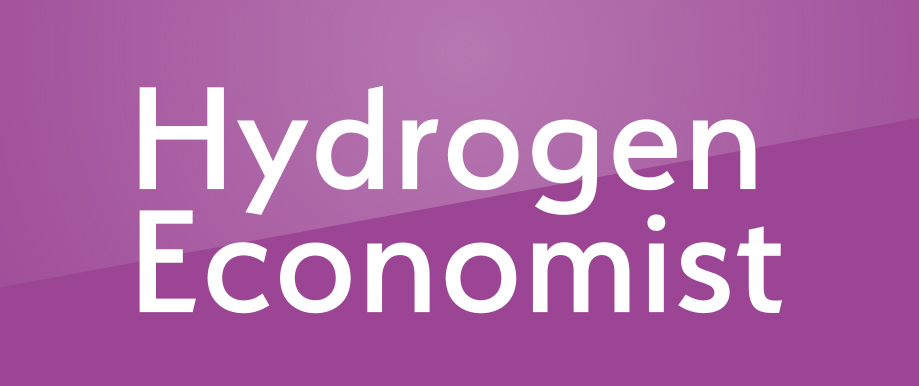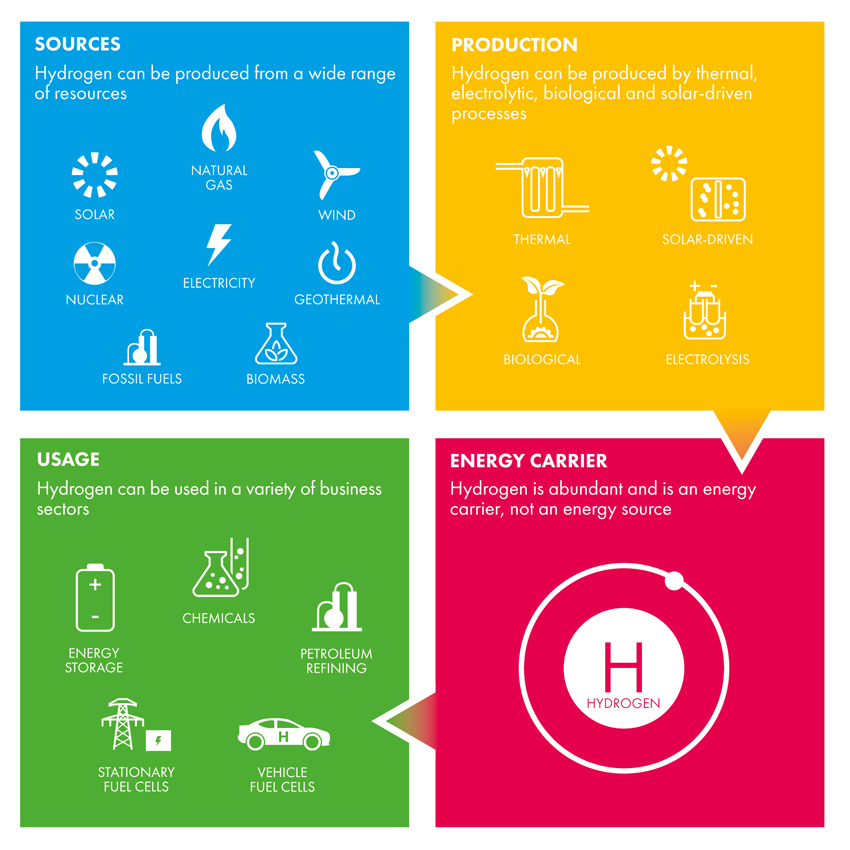Climate change and air quality concerns have pushed clean energy up the global agenda. As we
make the switch to new, cleaner technologies and fuels, our experiences of using power, heat and
transport are going to change, transforming the way we live, work and get from A to B.
Is this to be the end of the fossil fuel era?
As we transition to reduce greenhouse gas emissions increased use of hydrogen will be one potential option.
So why hydrogen?
Hydrogen makes no SOx or particulate matter at the point of use. In fuel cell applications, it also makes no NOx.
The advantage of using hydrogen as an energy carrier is that, when it combines with oxygen, the only byproducts are
water and heat.
No greenhouse gases are produced. So when made with low-carbon electricity or CCS, it also reduces CO2.
Hydrogen is a fundamental chemical element – one of life’s building blocks. It is the simplest
and most abundant element on earth. Finding naturally occurring hydrogen is very rare, however,
as it is highly reactive and forms chemical bonds with many other elements. As a result, there
are huge amounts of hydrogen bound up in common substances, such as water, methane and propane.
Why now for hydrogen?
Hydrogen has had many false starts over the past 50 years, but the time may finally be right.
The world’s largest oil & gas companies are investigating ways to cut emissions
Nations are examining ways to make cuts in emissions and address public sentiment
Banks and other financial institutions want to be associated with lower carbon projects




 PE Media Network Interactive Dashboard
PE Media Network Interactive Dashboard


